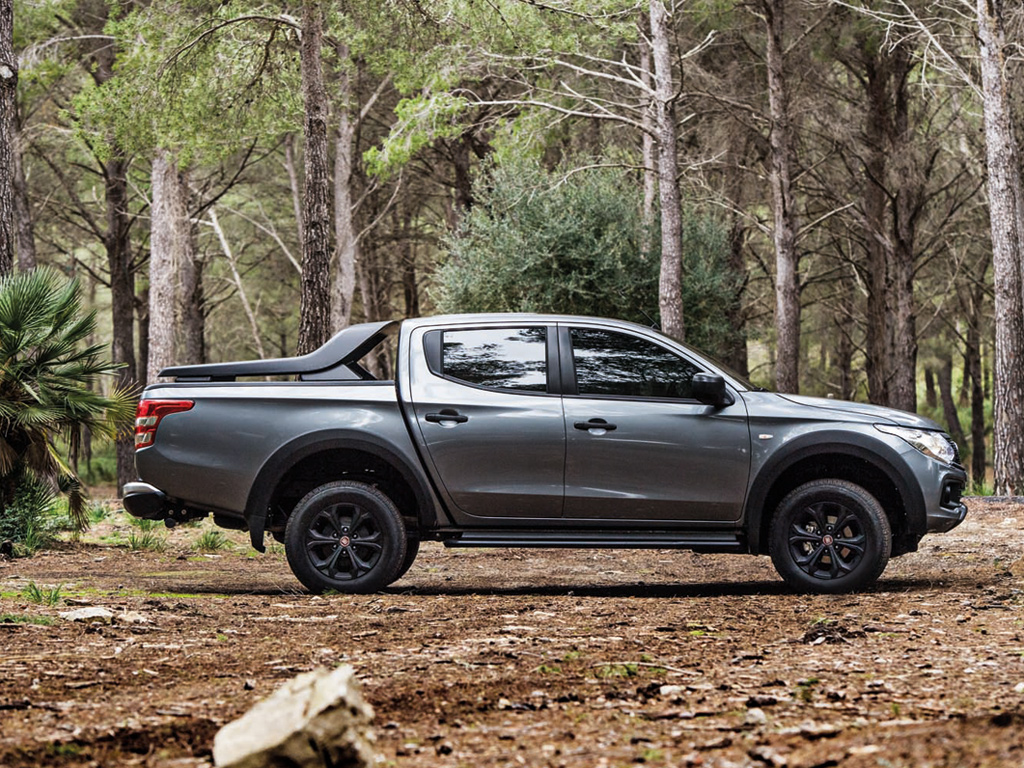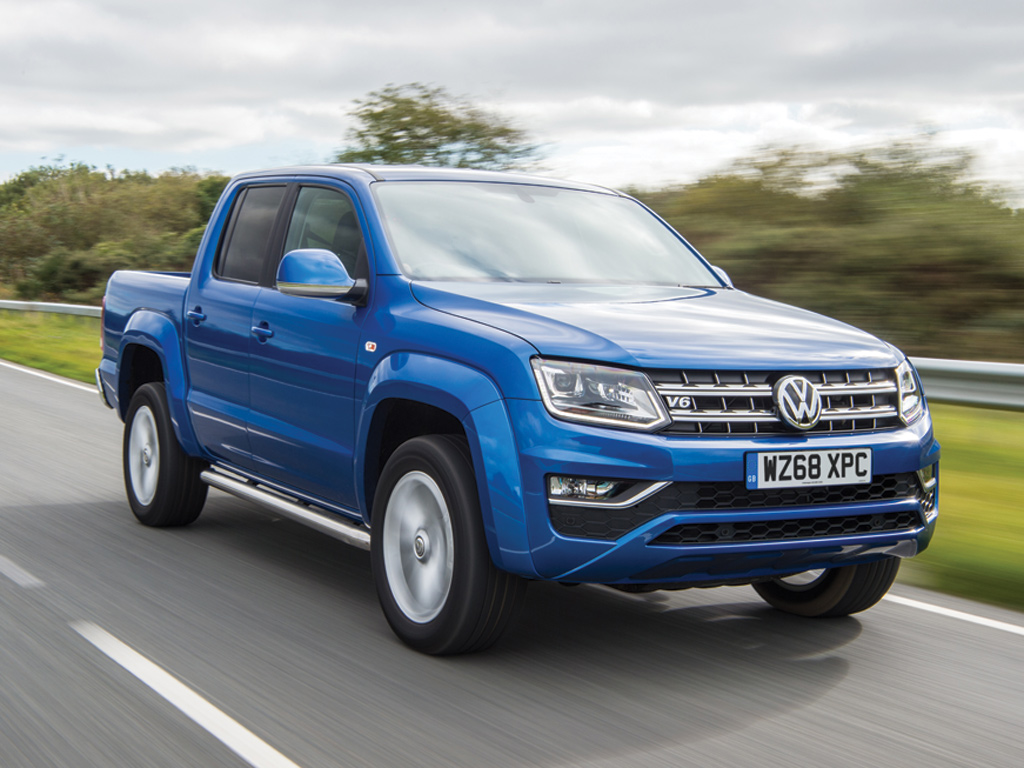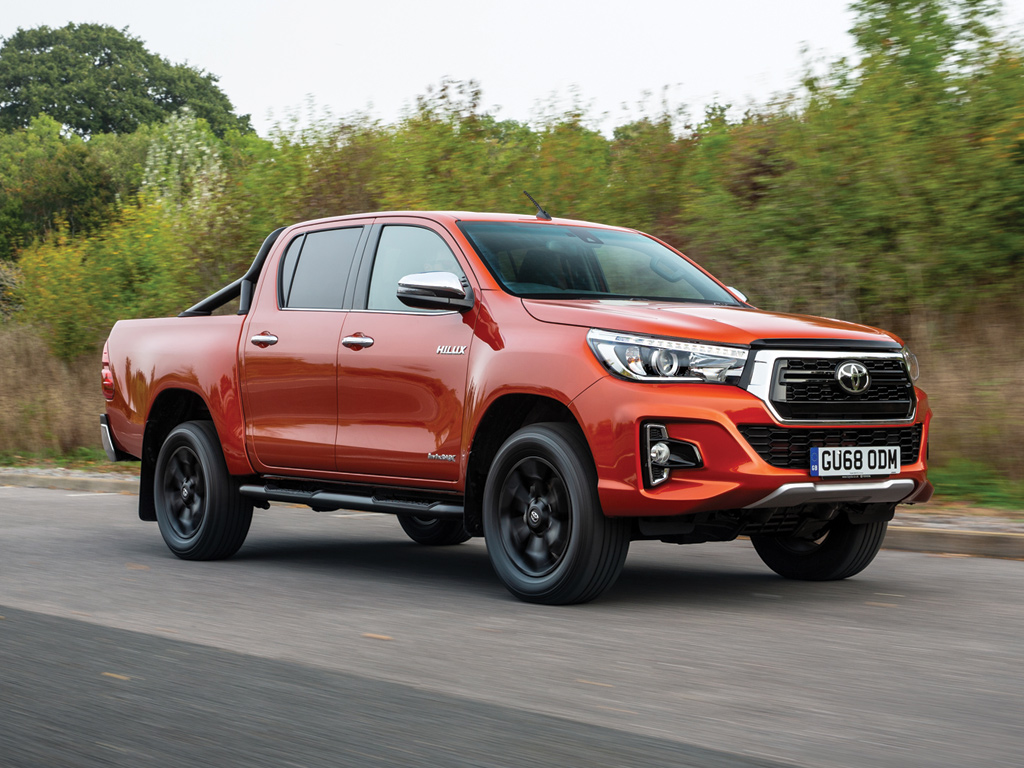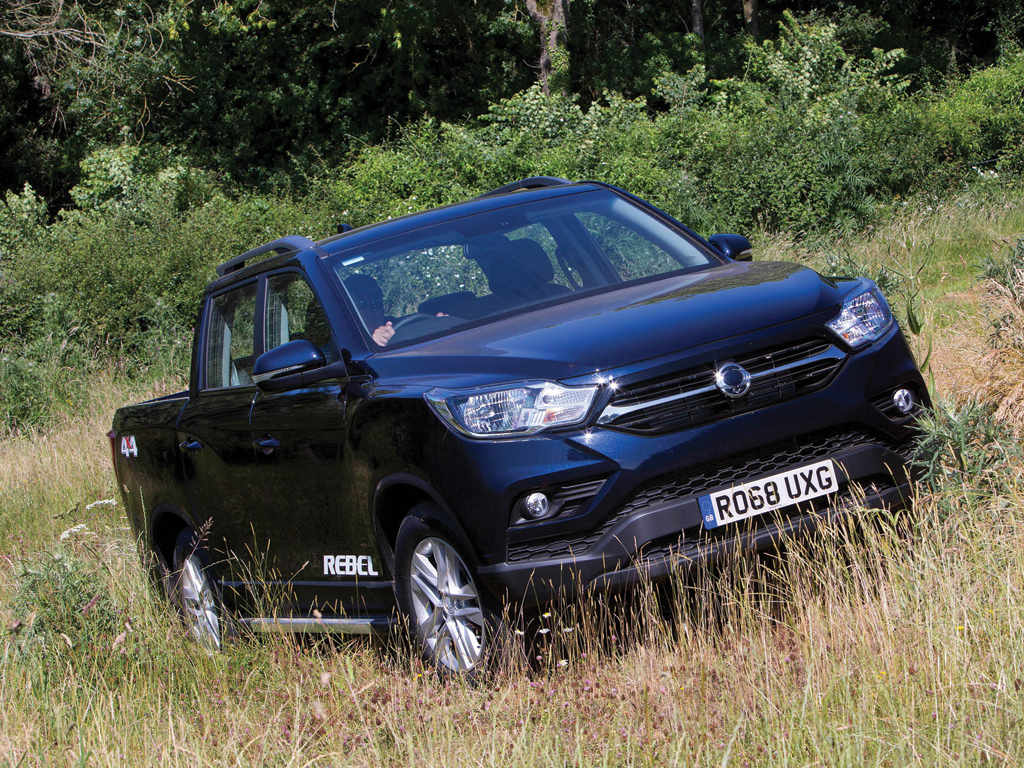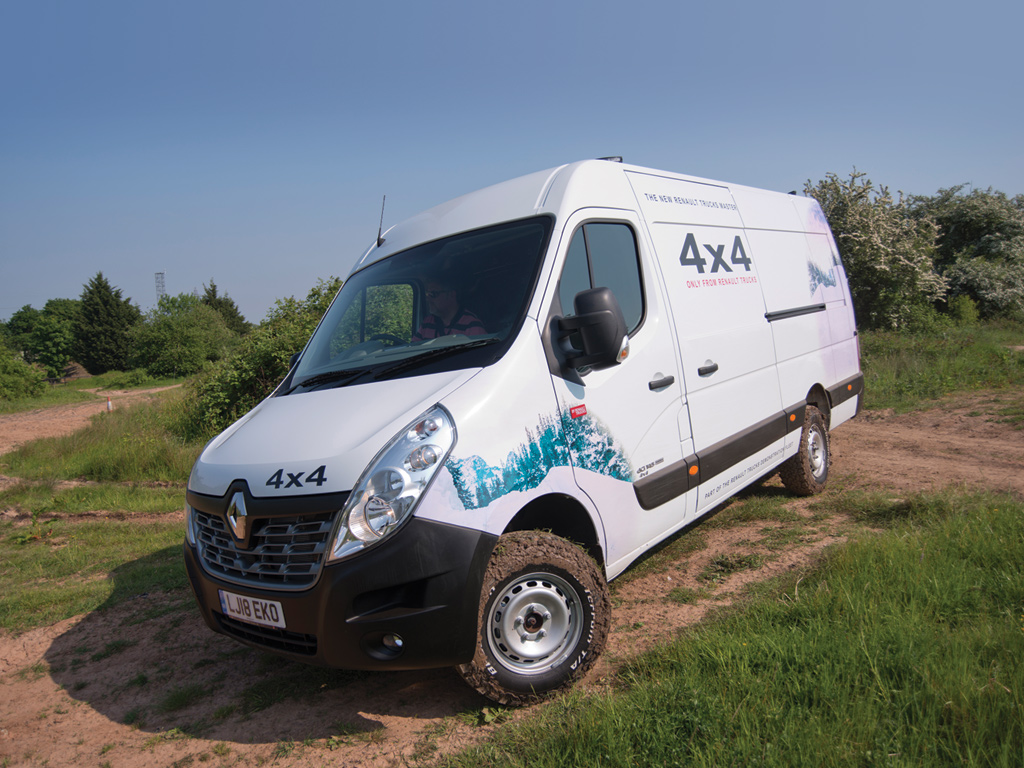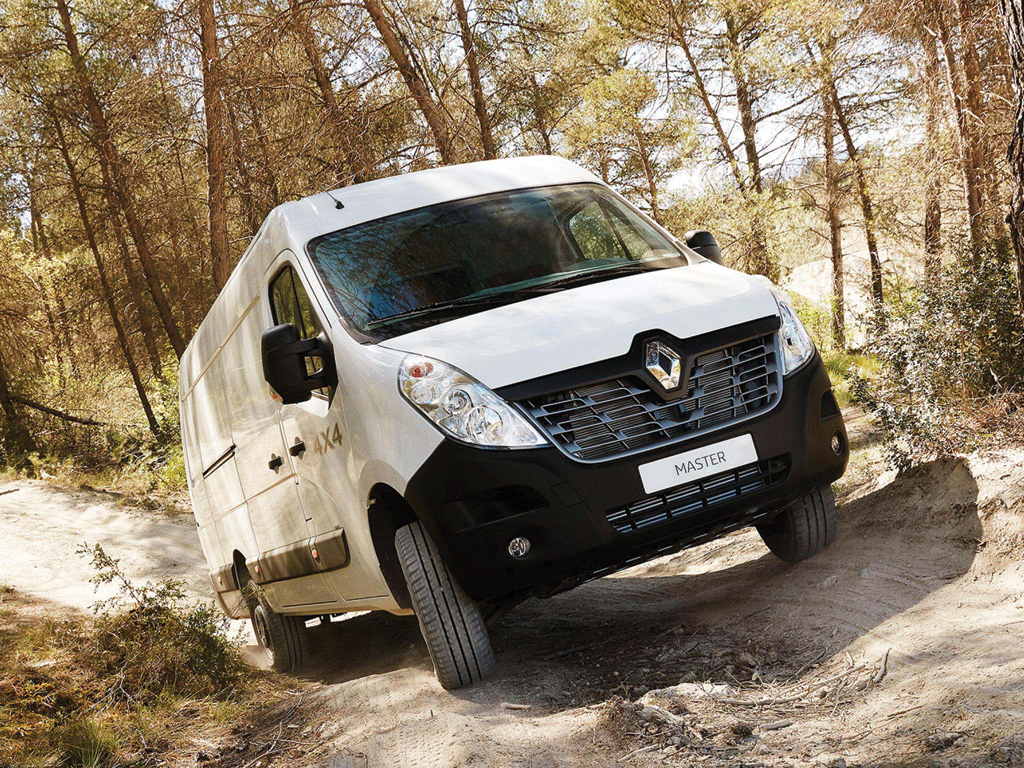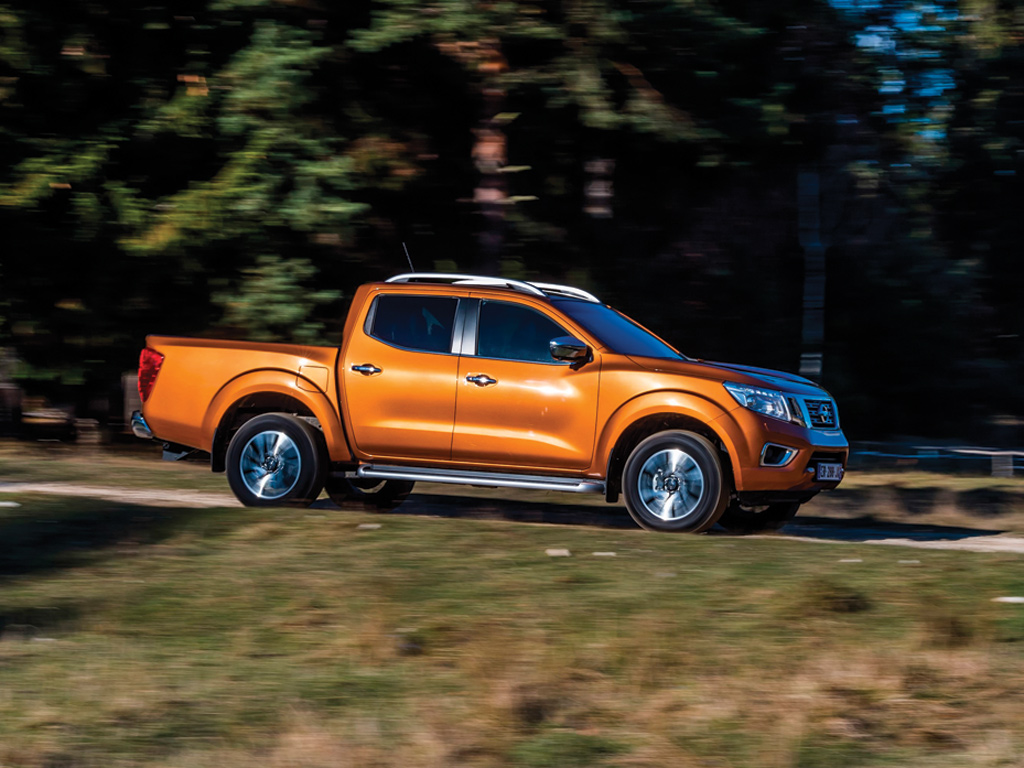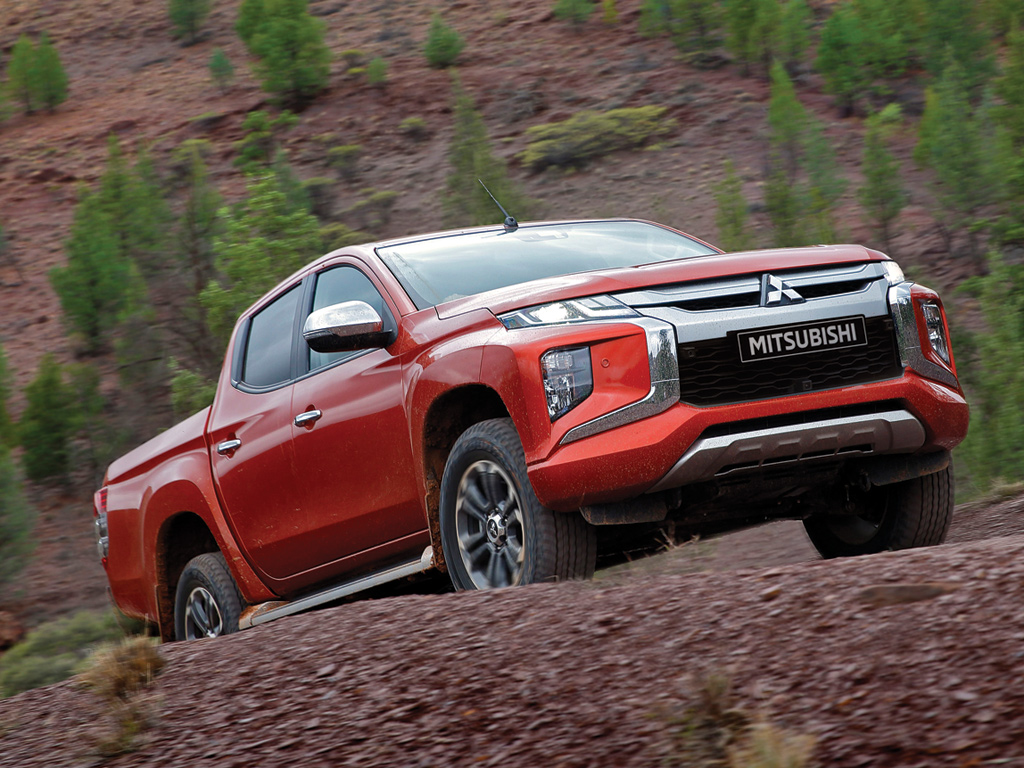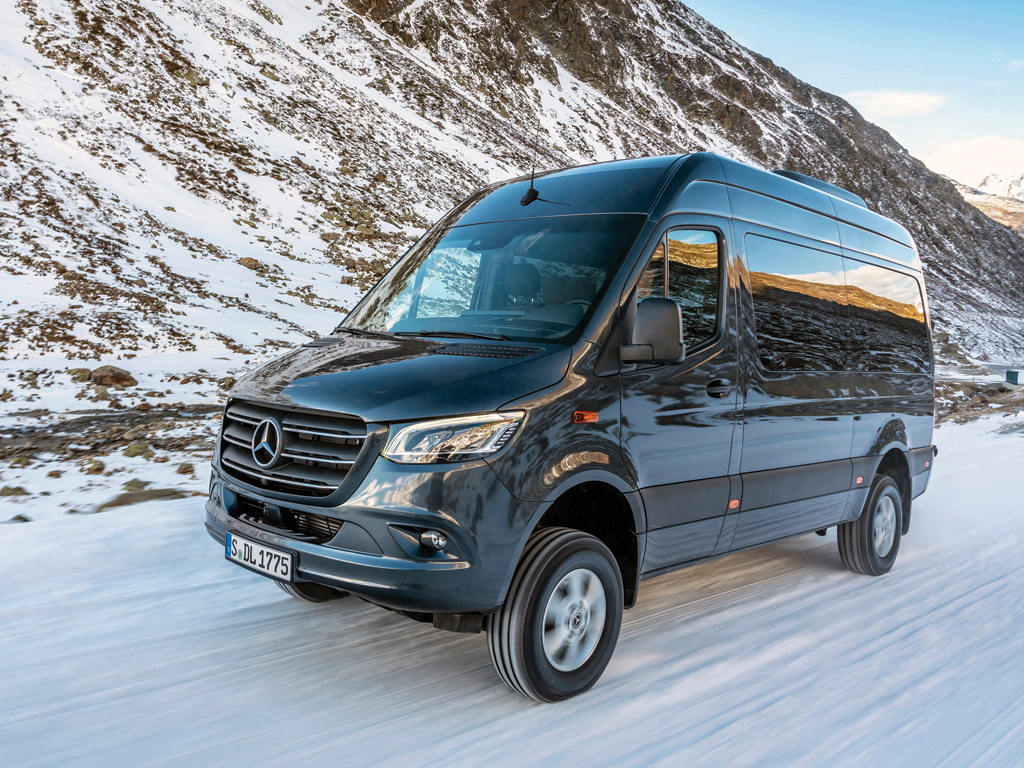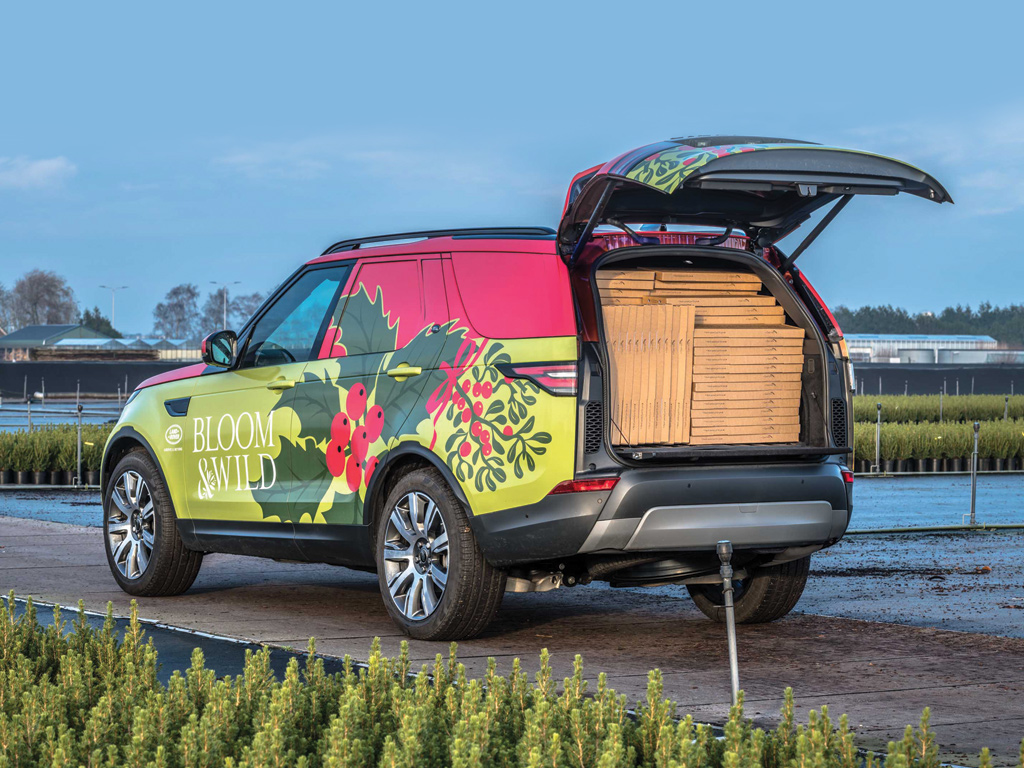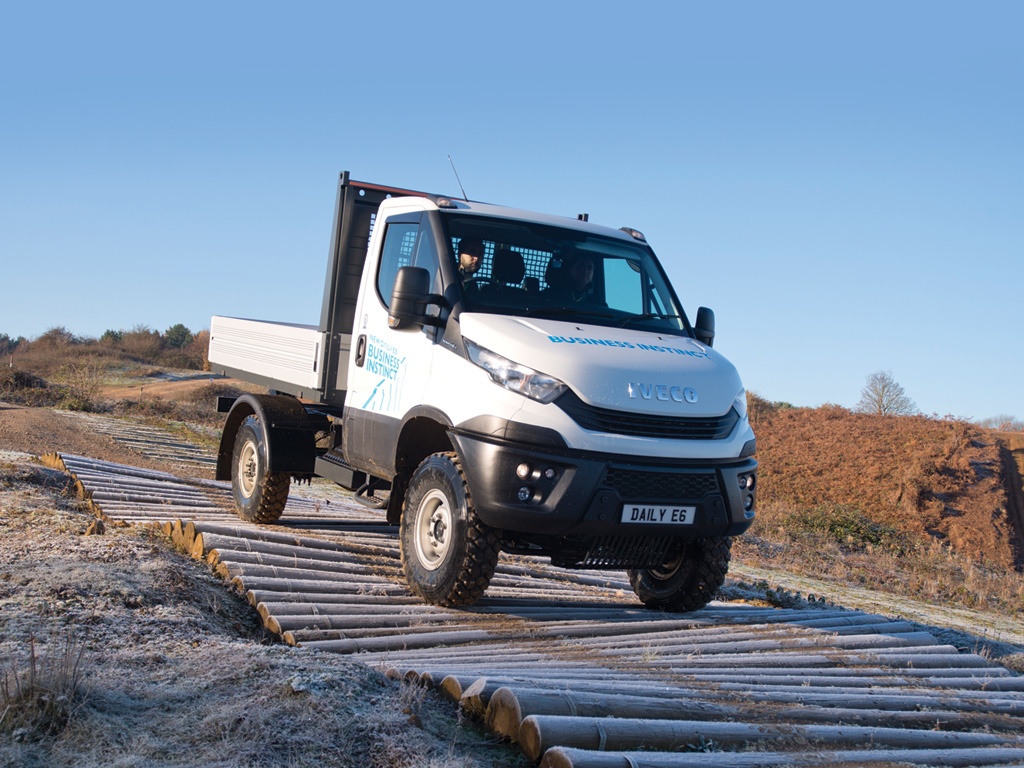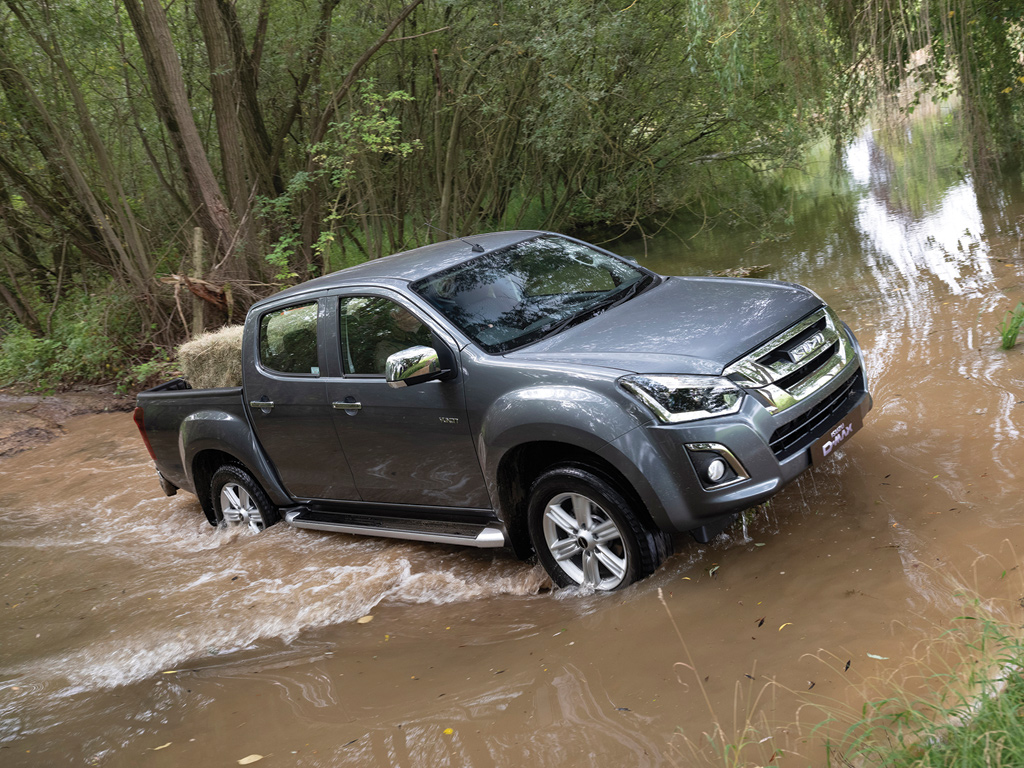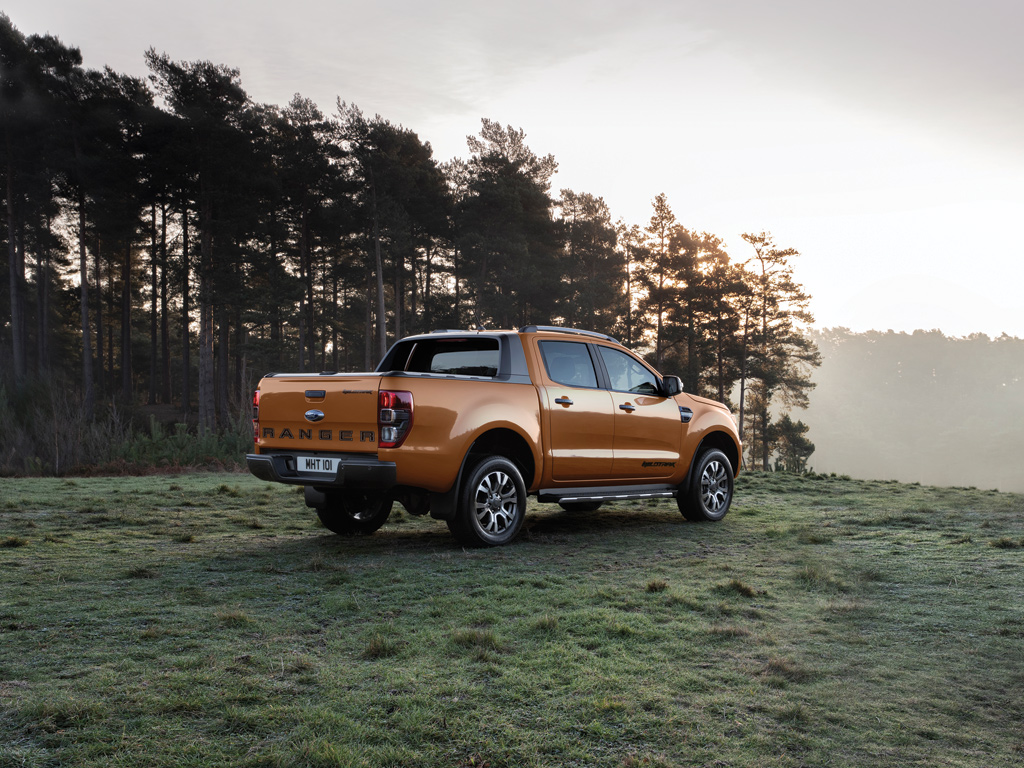While high-riding four-wheel drive pickups are very much in demand, it is easy to forget that many fleets actually require a mix of on and off-road capability. Dan Gilkes takes a look at this growing sector of the LCV market.
Fiat Professional
The commercial vehicle division of the FCA empire has chosen to badge Mitsubishi’s L200 pickup as a way into the truck market. The Fullback and higher trim Fullback Cross models are all but the same as the donor L200, but provide Fiat’s dealers with a full range opportunity for existing customers that require all-wheel drive along with their LCVs.
There is talk of a Jeep Gladiator pickup, based on the Wrangler chassis, coming to Europe at some point, but there is no news of a right-hand drive UK model.
Isuzu
Isuzu is unusual in that it is a pickup company only. The firm doesn’t make anything other than the D-Max pickup range, which it says makes it a more professional partner for pickup customers. One of the few companies to offer single, extended and double-cab models, all
D-Max trucks are now four-wheel drive.
Though offering a wide range of specifications and trim levels, up to the range-topping Blade, the D-Max remains very much a working truck. It can carry a tonne and pull 3.5-tonnes, putting the truck on a par with other pickups in the market. However, all D-Max models now use a 1.9-litre engine, down from the previous generation’s 2.5-litre, offering 164bhp and 360Nm of torque, somewhat less than many competitors. The upside is said to be improved fuel consumption. You can specify the D-Max in Arctic Trucks AT35 trim, with raised suspension and massive 35” tyres, for ultimate off-roading.
Ford
Ford’s Ranger pickup is the best-selling truck in the UK and across much of Europe. It is also one of the few still being offered with a choice of three cab layouts, from two-seat single-cab, through extended super-cab and into the full double-cab. Traditionally Ford did offer the single-cab in two and well as four-wheel drive, but all current Ranger models now have the drive to all four wheels.
Until this summer, Ranger has been powered by a line-up of 2.2-litre diesels and a range-topping 3.2-litre, five-cylinder engine. As can be seen elsewhere in this issue (Ranger Spotlight pages 10-11) that will change mid-2019, with the adoption of the 2.0-litre EcoBlue diesel already seen in Transit.
Ford will continue to offer a high-powered model, with a bi-turbo version of the EcoBlue motor, delivering 213bhp. The truck will also debut a 10-speed automatic transmission, in an effort to improve efficiency and cut fuel consumption.
Ranger is not the only 4×4 that Ford offers however, the largest Transit model can also be ordered with an intelligent AWD system. As with the pickup, drive is normally sent to the rear wheels, with the driver selecting all-wheel drive when the going gets slippery. The system automatically sends increased engine torque to the wheels with the most grip. The AWD system can be ordered with both the 130 and 170bhp versions of the EcoBlue engine.
Iveco
Italian truck and van manufacturer Iveco takes a heavy-duty approach to off-roading, with the Daily 4×4 being second only to Mercedes’ Unimog when it comes to tackling rough terrain. Offered at 3.5 and 5.5-tonnes GVW, the Daily 4×4 comes with 24 forward gears, a 170bhp diesel engine and three differential locks, to ensure forward motion can be maintained in the toughest terrain.
Riding considerably higher than the two-wheel drive versions, the Daily 4×4 offers multiple power take-off options to drive attachments and ancillary equipment. The truck is available as a chassis cab or as a crew cab, with seating for seven. There are two wheelbases for the single cab and a single 3.4m wheelbase for the double cab model.
Land Rover
Few manufacturers are as closely associated with the 4×4 driveline as Land Rover. However, for the moment at least, the company’s trusty Defender, which was offered as short and long wheelbase van or pickup, is not available. A new Defender is expected later this year, though there is little information about the commercial offering.
Until then, if you want a green oval on the bonnet of your 4×4 van, the options extend to a Discovery Commercial. Following the time-honoured method of converting an SUV to a van, by removing the rear seats and filling in the rear side windows, Discovery Commercial starts at almost £50,000. It does come with a fairly high specification though, in three trim levels from S to HSE.
There’s a choice of four-cylinder 240bhp and six-cylinder 306bhp engines, or you can even opt for a 2.0-litre petrol engine delivering 300bhp.
All engines drive through an automatic transmission.
MAN
As part of the larger Volkswagen group, MAN Truck & Bus has access to VW’s Crafter van, which is sells under the TGE name. As with VW’s Crafter, the all-wheel drive model is based on the front-driven van and powered by a choice of 130bhp and 177bhp engines, the latter available with six-speed manual or eight-speed automatic transmissions.
The 3.5-tonne vans are available in three body lengths, with a choice of roof heights. MAN also offers the TGE in single or double-cab chassis cab layouts on a range of chassis lengths.
Mercedes-Benz
Mercedes may have come late to the pickup market, but its X-Class truck has certainly made an impact. Based on the Nissan Navara, but re-engineered with a wider track and all new body panels and interior, the X-Class can be had with Nissan’s 2.3-litre diesel engine in 160bhp single turbo and 190bhp bi-turbo formats. More recently, Mercedes has added a V6 model, powered by its own 3.0-litre diesel engine and driving through the 7G-Tronic plus automatic transmission. This model also adopts permanent four-wheel drive.
The biggest changes to the pickup however are in the cab and in the driving experience, which is as close to an SUV as you can get with a pickup bed behind the cab. This level of luxury does come at a price however and while VW and Mercedes seem locked in a battle to provide the most powerful V6 engine, list prices continue to reach all-time highs.
Though new to the pickup sector, Mercedes has a long history in the off-road utility market, with its Sprinter AWD vans and chassis cabs and of course the heavier Unimog. Having recently introduced a new Sprinter model, with front and well as rear-wheel drive, Mercedes has now updated its all-wheel drive models too.
The Sprinter AWD is a more dedicated off-roader than the likes of the Transit AWD, with a raised ride-height and a selectable low-range transmission. The vans feature Adaptive ESP for off-road use, with Downhill Speed Regulation. They also come with hydraulic steering, rather than electronic assistance of the 2WD models, plus mixed-use mud and snow tyres for additional traction off-road.
Four-wheel drive is available on both 3.5 and 5.0-tonne models, in van, crewcab and chassis cab formats, using the L2 and L3 chassis lengths.
Mitsubishi
Mitsubishi has been building all-wheel drive pickups for decades, almost inventing the luxury-trim model with a host of Barbarians and Warriors along the way. The company has shown the look of its next L200 pickup, due in the autumn, though has yet to make a decision about the exact UK engine specification.
For now, the Series 5 truck continues to do the job for workers and luxury owners. As with Ford, the L200 can still be had in three cab formats, what the firm calls single, club and double-cab. All have selectable four-wheel drive and all three can be had in utilitarian 4Life trim. The double-cab however, comes in a host of higher-trim editions, including the aforementioned Barbarian and Warrior models, along with SVP and Barbarian Black range-toppers.
Mitsubishi doesn’t stop at pickups, with both the Outlander PHEV and the recently introduced Shogun Sport due to be offered in commercial trim. This involves removing the rear seats and installing a flat load bed, while blacking out the rear side windows.
The Outlander PHEV of course has a USP in being the only hybrid all-wheel drive van on offer at present. This will provide the likes of water authorities and local councils with an alternative low-emission option with off-road abilities. The Shogun Sport Commercial, which should be available in the coming months, is far more of an off-roader, though its high trim level makes it more than comfortable on-road as well.
Nissan
Nissan’s Navara remains one of the best pickups on the market. It forms the basis for Renault’s Alaskan, which is sadly not sold in right-hand drive form, and also for the Mercedes-Benz X-Class, though in much modified form. One thing that Mercedes has not changed is the fact that Navara runs on coil spring rear suspension, offering a much-improved ride and handling combination than the majority of leaf spring pickups.
That suspension system doesn’t hold the Navara back off-road though, where it is perfectly capable of keeping pace with the best of the rest. Nor does it limit productivity, with the double-cab Navara capable of carrying over 1.0-tonne and hauling a 3.5-tonne trailer.
It’s available in king and double-cab layouts, with a choice of single and twin-turbo diesel engines. You can also have a six-speed manual or a seven-speed automatic transmission. There are also clear specification steps from the base model Visia, up to the range-topping Tekna and N-Guard trucks.
As with a number of pickups on the market, you can order the Navara with an Arctic Trucks AT32 conversion, adding 20mm of ride height and monster 32” tyres.
Renault
Though Renault has chosen not to bring its Alaskan pickup, based on Alliance partner Nissan’s Navara to the UK, the company does have a presence in the AWD market. Companies that require access to off-road sites can opt for a 4×4 conversion to the Master van and chassis cab.
Based on rear-drive 3.5-tonne models, the Oberaigner conversion adds a transfer box and driven front axle, while lifting the suspension and incorporating underbody protection. The all-wheel drive conversion is offered on panel vans, plus single and double-cab dropsides.
Renault Trucks
Renault Trucks, which is part of Volvo Trucks, not a part of the Renault car company, also markets the Renault Master van line. This includes the Oberaigner 4×4 conversion, with raised ride height, underbody protection and low-range transfer box. The truck business offers the 4×4 conversion on both its 3.5 and 4.5-tonne rear-wheel drive models, with a choice of single or twin rear wheels.
Power options include the 145bhp and 165bhp twin-turbo versions of Renault’s 2.3-litre diesel engine and the drive is transmitted through a six-speed manual gearbox. The Oberaigner conversion includes a new driven front axle and the move from two to four-wheel drive, or high to low gearing, is controlled by a simple electronic control panel on top of the dash. The conversion weighs around 150kg, so will have a slight effect on payload, though contractors that require the level of off-road ability that comes with the conversion will not be too worried about that. Likewise, the circa £11,000 cost of the conversion will not deter buyers that need to get personnel and goods to previously inaccessible locations.
SsangYong
Korean manufacturer SsangYong has played a role in the UK pickup market for some years, completely overhauling its Musso truck line last year. Available as a double-cab 4×4 only, the Musso comes in four trim levels, all offering a list price well below their competition. As with Nissan’s Navara, the Musso has coil spring rear suspension, offering an improved ride and handling combination. Like the Nissan, the SsangYong retains the ability to carry a tonne and tow 3.5-tonnes. Indeed, it claims to be the only pickup that can do both at the same time.
The SsangYong pickups are powered by a 2.2-litre diesel engine, delivering 181bhp and 400Nm of torque. A choice of six-speed manual and automatic transmissions is available.
Volkswagen
Volkswagen has grabbed a major share of the pickup market with Amarok. Initially launched with a range of 2.0-litre four-cylinder engines, the VW is now only offered with V6 power, though in a range of outputs with manual and auto boxes. The big sellers are the higher-powered models, with as much as 258bhp and 580Nm on tap, driving through an eight-speed automatic transmission and a permanent all-wheel drive system.
It’s an incredibly capable truck, even with lower outputs and selectable all-wheel drive. Amarok is offered with a host of driver assistance systems, for on and off-road use and the pickup has established Volkswagen as a force to be reckoned with in the truck market.
Volkswagen was no stranger to the 4×4 sector, even before Amarok and the company continues to offer 4Motion all-wheel drive in a range of van models. You can have a 4×4 Caddy in other markets, though in the UK the firm has stuck with two-wheel drive for its smallest model. However, both Transporter and Crafter can be ordered with 4Motion all-wheel drive, offering sure-footed driving in slippery conditions.
Toyota
Toyota, more than any other manufacturer, is almost synonymous with the four-wheel drive pickup, with Hilux known across the world as a byword for unstoppable truck reliability. The company still offers a single cab, the longer extra-cab or the more popular double-cab format. All are four-wheel drive models. There is a wide range of trims and specifications on offer, though all are powered by the same 2.4-litre diesel engine, which offers a serviceable 150bhp. Higher trim models can be had with an automatic transmission, which now boasts six forward ratios.
All models can haul over 1.0-tonne, while towing capacity, originally set at just 3.2-tonnes, has now been lifted to a market competitive 3.5-tonne limit. Unusually, Toyota offers a number of conversions from its dealers based on the Hilux chassis, including dropsides and tippers, both supplied by bodybuilder TGS.


